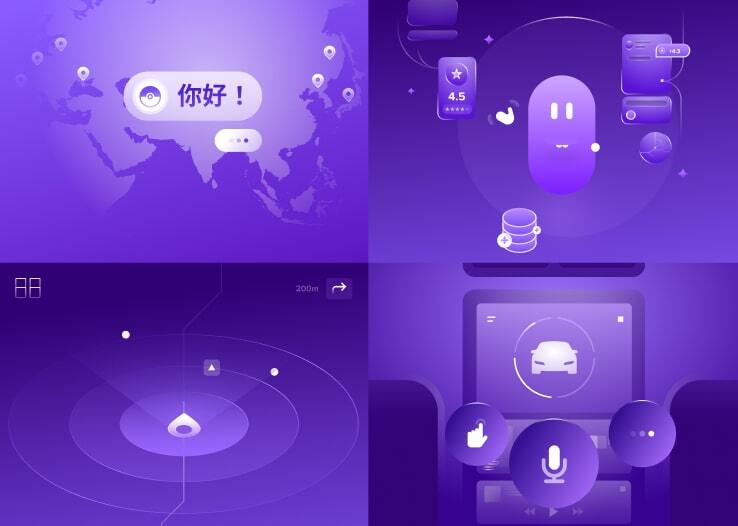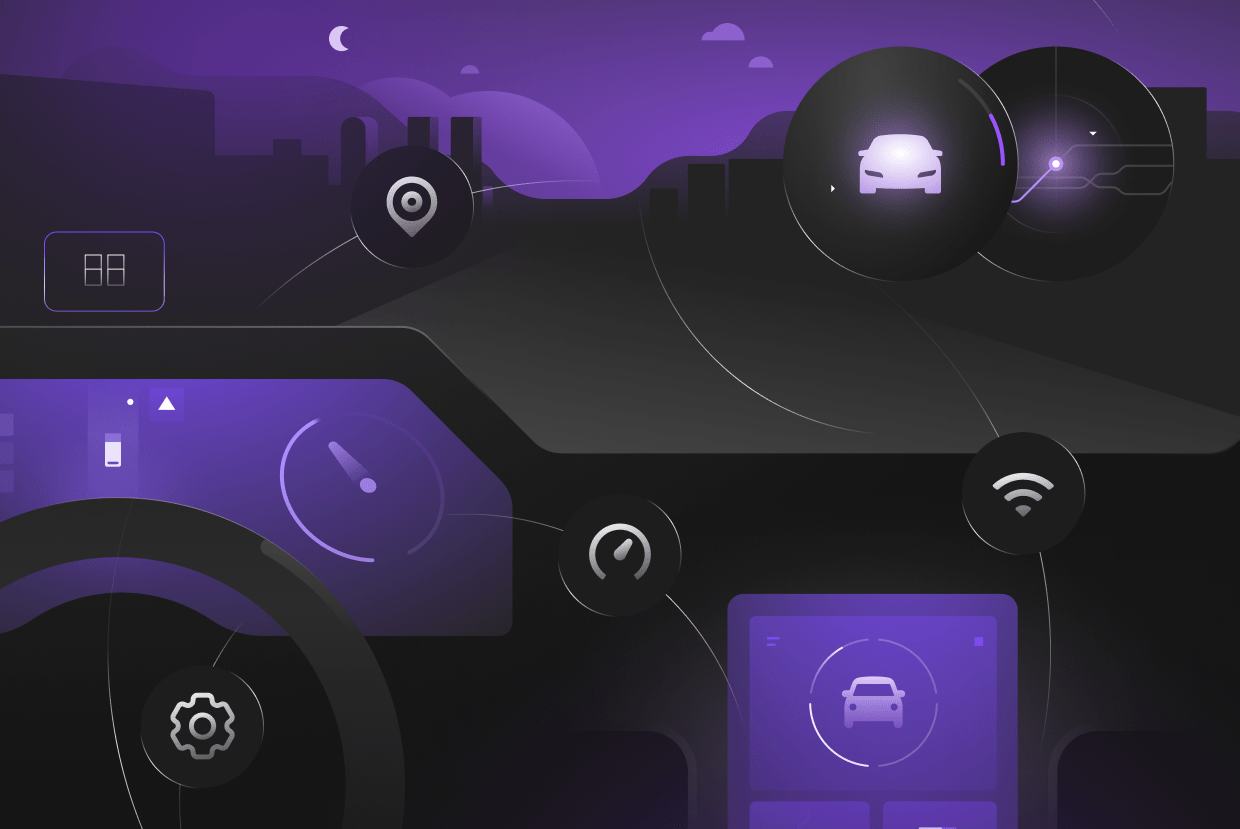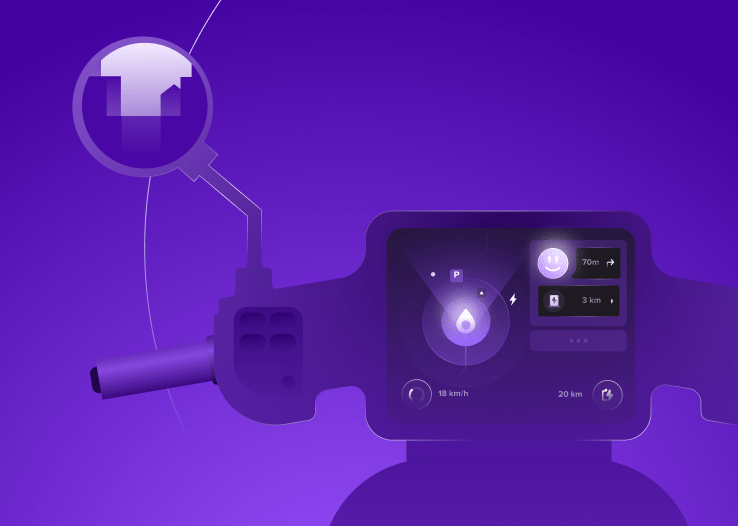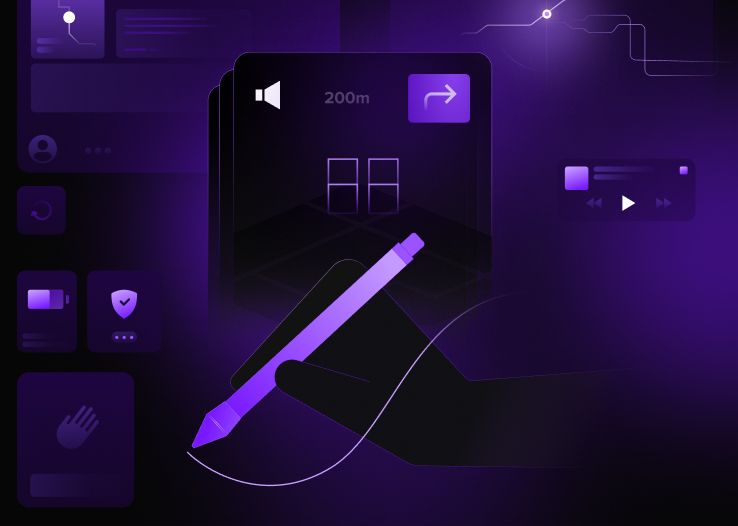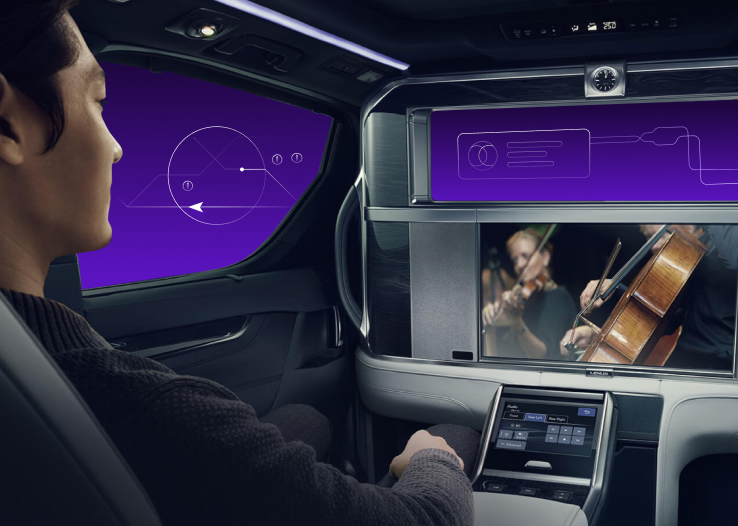
What do consumers look for in a car? Safety, comfort and fuel efficiency, sure. As important, though, is automotive UX design. Today’s drivers and passengers expect easy-to-use car HMI and personalized voice AI. They also expect automotive HMI solutions to make driving more productive, efficient and enjoyable.
For OEMs and their partners, getting car HMI design, voice AI and digital cockpits right requires smart automotive UX design, advanced HMI engineering and a holistic understanding of customer expectations. That’s exactly what we are exploring in this Shine podcast episode, with the help of experts from Star and the Mercedes-Benz group.
Topics covered include:
- automotive user experience best practices,
- trends in HMI solutions,
- the role of in-car assistants,
- the importance of using voice AI in car HMI design,
- and the future of automotive UX.
Read on for some highlights from this fun and informative discussion about HMI UX design!
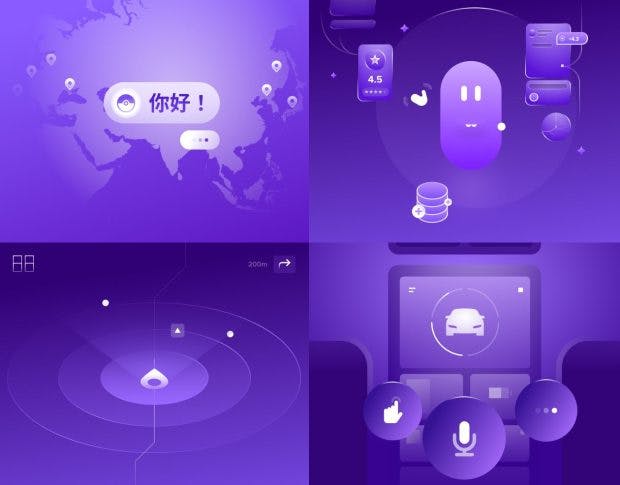
Dive deeper into the biggest automotive HMI challenges, from creating multimodal experiences to understanding localized design.
Automotive UX design that competes with smartphones
Car HMI and voice AI play a growing role in automotive HMI design. Both areas are advancing quickly, contributing to new HMI solutions and elevated in-car experiences. But the more advanced AI gets, the greater the expectations consumers have for the in-vehicle experience, whether they are engaging with digital interfaces or taking part in voice interaction. “When it just feels so natural to talk to their car, people expect that it’s just as smart as a human being,” Wolfgang Klein says in the podcast.
People also expect human-machine interfaces for cars to be as smart as their mobile devices. When it comes to automotive user experience design, automobile brands aren’t just competing with one another, they are competing with smartphones. Designers must create HMI solutions that are as effective and user-centric as a consumer’s mobile device.
“We have to make our system as easy as possible for them to not even second guess it and make it feel so natural that they just get in the car and use it,” Mihai Antonescu explains.
Subscribe on Apple Podcast | Subscribe on Spotify
In-car technologies that bring automotive brands to life
Another takeaway from the podcast is that OEMs should use digital interfaces and automotive UX design to reflect their marketing claims and brand promises. Does your brand promise luxury? Then your in-car technologies, including voice AI for car HMI, should support that brand identity. Nils Schanz notes a voice assistant can even differentiate a car from competitors and strengthen consumers’ connection with the brand.
To achieve exceptional automotive UX design, companies must take a user-first approach. This is particularly true when it comes to voice interfaces in automotive HMI. Mihai Antonescu explains that the automotive design space has experienced a voice-only/voice-first movement, but “voice can’t get the job done alone.”
Nils Schanz agrees, explaining he doesn’t compare voice capabilities to digital interfaces, but rather thinks of how to use them in tandem. Flexibility and choice are important so users have control over the in-car experience. What you don’t want to do is “impose any one way for the user to achieve one goal,” Wolfgang Klein notes.
Voice AI for car HMI
A voice assistant is obviously not the only car HMI component that matters to drivers. But the importance of voice interfaces in automotive HMI cannot be denied. As voice AI for car HMI continues to improve, new opportunities for automakers are created. At CES 2022, Mercedes previewed voice technologies featured in its VISION EQXX, a prototype car that encapsulates Mercedes' vision for the future of electric cars. These technologies make voice AI more emotional and expressive than conventional voice AI in cars. They also include voice recognition solutions that are more efficient and accurate than previous technologies.
Moving forward, the auto brands that stand out for their voice AI and automotive UX design will be the ones that keep consumer expectations top of mind in their car HMI design. These automotive leaders realize that consumer needs matter more than even technology or HMI engineering trends. One such need is personalization. Nils Schanz notes that people aren’t looking for an “out-of-the-box solution.” They want an individualized, personalized in-car experience.
The next five to 10 years, we are going to see huge improvements, both in [Voice] interaction and in understanding. We are also going to see more customer demand and expectations. So, people will get used to it, they will use it as they now use their phones, and they will expect it to work as robust as your mobile phones work.

Mihai Antonescu
Product Manager at Mercedes-Benz Research & Development North America, Inc.
Automotive HMI design and development predictions
Automotive HMI and Voice AI in cars are still in the nascent stages, yet they are making a huge impact on the in-car experience. Here are a few predictions the experts make about human-machine interfaces for cars, including car HMI design and voice AI in car HMI.
- The car will become the second office: If in-car technologies, AI and voice recognition solutions deliver on their potential to save passengers time and make life more efficient, cars will become people’s second office, explains Wolfgang Klein. Drivers and passengers will use car digital interfaces more frequently. And the car voice assistant could become the new executive assistant. Nils Schanz explains how he calls his assistant every morning to discuss things like last-minute schedule changes. “How great would it be if you would have a real digital assistant help you out with such routines on a daily basis? That is where we are heading,” he says.
- We will think about kids: Be careful how you talk to Alexa. Parents in the UK were concerned with children’s imposing tone and lack of “please and thank-yous” in voice interactions with Alexa. So Amazon rolled out a “polite mode” in the UK market. “In a way, we might contaminate our interaction with humans through how we interact with machines,” Wolfgang Klein notes. Mihai Antonescu shares a personal story that illustrated how AI is influencing children’s development and perception of what it means to be alive.
- The role of the designer will continue to expand: “Maybe we have taken some detours and entered some cul-de-sacs, but I think in the creative process, you sort of have to try too hard to see where the breaking points of the concept are, because you don’t know how far you can go until you’ve been there,” Wolfgang Klein says.
- The automotive user experience design role has become more challenging, satisfying and creative. Increasingly, when designing human-machine interfaces for cars, he and his team are “tasked to create a story around an entire user experience; and by the story, I mean overlaying this sort of poetic metaphorical level on top of the functional UX level.”
The podcast makes it clear that all three guests love car HMI design. They also enjoy the discussion, and we think our listeners will, too. So, please check out this behind-the-scenes look at automotive HMI design, cutting-edge HMI solutions and the future of voice AI for car HMI.
Solving your own automotive UX design challenges
These were just a few highlights from the discussion. Be sure to listen to the podcast for more insights about automotive HMI development and the future of cars.
Want to go deeper? We would love to learn about your HMI design challenges. We would also love to tell you about our experience working with automotive innovators to redefine in-car experiences. Recent projects include co-creating a scalable HMI framework, designing a next-gen HMI solution for MG Cars, building an award-winning automotive in-car assistant, and creating an in-car concierge service with NTT DATA.



